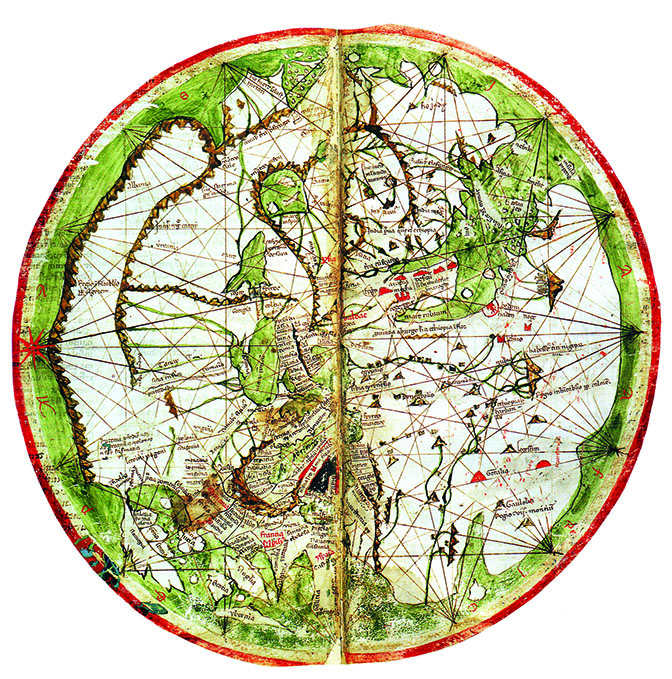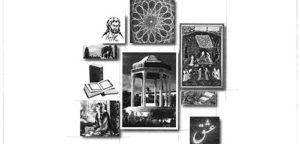 Towards a Cosmic World View:
Towards a Cosmic World View:
An Interview with the Founders of Planetary Collective
by Sholeh Johnston
In 2011, old school friends Guy Reid, Christoph Ferstad, and Steve Kennedy set out to challenge the misperception
 FROM THE EDITORS
FROM THE EDITORS
It has been said that teachings of Sufis are paradoxical and their behavior crazy. In the Sufis’ mystical world view, the unseen, inner realm is what counts the most and it, in turn, determines all material phenomena. This is in contrast to the opposite, materialistic world view that has been most widely promoted for centuries, making Sufi thought seem at times counter-intuitive or illogical. This issue of SUFI focuses on contemporary explorations of some timeless teachings—profound and often paradoxical—handed down by Sufi masters to inspire the inward journey.
[threecol_one]DISCOURSE
YEARNING
by Alireza Nurbakhsh
ARTICLES
RUMI AND “ISLAM”
RECONSIDERED
The Light of God Beyond Religion
by Jawid Mojaddedi
ADAB
Sufi Etiquette in the Outer
and Inner Worlds
by Llewellyn Vaughan-Lee
THE MIRROR OF
CONSCIOUSNESS
An American Ethnographer
in a Sufi Community
by John L. Caughey
[/threecol_one][threecol_one]
INTERVIEW
SUFISM: HISTORY,
POLITICS AND CULTURE
A Conversation with
Carl Ernst
interviewed by Llewellyn Smith
CULTUREWATCH
RE-TRACING THE SIMORGH
Interpretations of “The
Conference of the Birds”
in Contemporary Art
by Sholeh Johnston
BOOK REVIEWS
THE CONFERENCE OF
THE BIRDS
by Alexa York Lumbard
Review by Peter Valentyne
FILM REVIEW
MAPPING OUT “CLOUD
ATLAS”
by Peter Valentyne
[/threecol_one][threecol_one_last]
NARRATIVES
MUEZZIN
by Charlotte Heckscher
BAAGHY AND THE
SPECIAL CARGO
Some Kind of Story
by Martin Harris
POETRY
LOST
by Dr. Javad Nurbakhsh
RIVER OF LIGHT
by Heather Grant
DIRECTIONS OF GOD
by Ellen Jane Powers
HONEY
by Raphael Block
STARS FOR ROBERT BLY
by Thomas R. Smith
INSIDE COVERS – POETRY
UNHINGED
by Roger Loff
WE ARE CELLS OF HIS BODY
by Jeni Couzyn
FEATURED POET
JENI COUZYN
FEATURED POET
ELLEN JANE POWERS
FEATURED ARTIST
AARON HUEY
(Cover Photo & Interview Photos)
[/threecol_one_last]
 In December 1972, Apollo 17 gave us one of the most powerful photographs of the 20th century. It was called “The Blue Marble” and it was the first fully illuminated image of the earth taken from 45,000 kilometers away in space. For the first time people could visually comprehend something that mystic traditions have intimated for millennia—the earth as a unified, “absolute” being. The individual ego paled in comparison to the beauty of the earth floating in a vast cosmic ocean. The image continues to inspire contemplation of our existence within a delicate interconnected, interdependent ecological system.
In December 1972, Apollo 17 gave us one of the most powerful photographs of the 20th century. It was called “The Blue Marble” and it was the first fully illuminated image of the earth taken from 45,000 kilometers away in space. For the first time people could visually comprehend something that mystic traditions have intimated for millennia—the earth as a unified, “absolute” being. The individual ego paled in comparison to the beauty of the earth floating in a vast cosmic ocean. The image continues to inspire contemplation of our existence within a delicate interconnected, interdependent ecological system.
It is too easy to forget the importance of nature to our spiritual nourishment, to forget our commitment to serve all living things—not just other human beings. However, as this issue of SUFI attests, there are remarkable people whose connection to nature translates to active engagement, who seek to adapt to nature’s creative ebb and flow, and for whom service to all of creation is at the heart of spiritual practice. Among the foremost of these are the Kogi people, whom Maria Gutierrez meets at the “Heart of the World” while traveling in Colombia. Les Sponsel reviews the case for a revolution in consciousness in his introduction to the field of spiritual ecology. The threads of his call to action are beautifully taken up by eco-activist and Jain monk, Satish Kumar, in conversation with Llew Smith and Annie Stopford. Wendy Tremayne shares her vision of a modern sustainable lifestyle, underpinned by Sufi principles, and Planetary Collective explores the power of wonder and awe in reconnecting us to a state of unity in CultureWatch.
Alireza Nurbakhsh’s discourse, “Perspectives on Climate Change,” goes to the heart of how taking a spiritual stance towards the world could lead us to overcome the distractions of “right” and “wrong” and change our collective behavior for the better. Andy Goldsworthy’s photo essay reminds us of the constant state of change, evolution and transformation all around us and within us at every moment, summing up anew ecological paradigm with its title: Shaking Hands with Nature.
—The Editors of SUFI
 THE ROSE OF SHIRAZ by Jeffrey Rothschild
THE ROSE OF SHIRAZ by Jeffrey Rothschild
HAFIZ OF SHIRAZ by Ali Jamnia and Mojdeh Bayat
HASSIDIC WISDOM by Rabbi Allen S. Maller
WHY ANTS DO ONE THING AT A TIME by Anonymous
LOOKING FOR HAAL IN ALL THE WRONG PLACES by Dani Kopoulos
POETRY from Diwan-I’Attar translated by A.R., Diwan-I Hafiz translated by J. Einboden and J. Slate and A.R., One by Four, translations of Hafiz translated by Jeffrey Rothschild, Walter Leaf, Jawid Mojaddedi, P. Avery and J. Heath-Stubbs, Imaginary Numbers, Newton’s Third Law of Karma, and Roll Over Descartes, by Paul Campbell, Adrift on Your Ocean by Mary Kugler, heart and mind by Joan Margalith
ARTWORK Featured cover photograph of a painting by Nouriman Manouchehri from the Paradise Series 2006-2007
BOOK REVIEW Sufism in the West ed. Jamal Malik and John Hinnells
“Just look at me, Master!” Hafiz exclaimed that night as we sat there drinking tea. “I am an old man, and my wife and son are both long since gone. Tell me, for I have no idea, what have I attained by being your faithful devotee, your obedient disciple and servant, all these many years without any complaint whatsoever of need for recompense.”
I fully expected the Master to explode in some fashion at Hafiz for his brashness, even if just for the sake of show. But something in Hafiz’ tone must have hit the mark because the Master became extremely gentle with him, saying, “My son, you must be patient on this path and wait without expectation of any achievement or reward, for it is not you who is being patient at all but rather Him being patient through you.”
Visit the Store to Subscribe or Buy the Current Issue and Back Issues
 by Ali Jamnia and Mojdeh Bayat
by Ali Jamnia and Mojdeh Bayat
Why did Hafiz keep his Sufi identity a secret, and why did he not reveal the name of his master? And why is it an issue? Is it an issue because if he was a Sufi, then he would have followed one school of thought? If so, his poems could be interpreted in that light and this interpretation would bring a sense of coherence to his work. There does not seem to be any known reason why he should have kept his Sufi identity a secret. However, there have been certain branches of the Malamatiayya Sufi Order in the course of history whose members insisted on keeping their Sufi identity and that of their master a secret. Whether Hafiz belonged to such an order is not clear. The followers of this branch believed in subjecting their egos to the blame of others as a means of purification. Hafiz has made a few references to this approach in his work.
Visit the Store to Subscribe or Buy the Current Issue and Back Issues